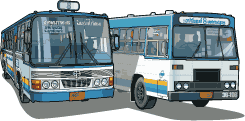Unregulated Entry with Quality Control An authority (assuming one exists) may allow free entry to the public transport market, subject only to a requirement that the vehicles used meet a specified set of standards.
If these standards are reasonably high and ensure that the vehicles are of good quality, at least by local standards, with high maintenance standards ensured by government inspections, this system is described as unregulated entry with quality control.
If a vehicle meets the quality criteria set down it may enter service on any route at any fare, and pick up and set down passengers at any location unless forbidden by general traffic regulations.
Thus entry to the public bus system should in theory be no different from other businesses, such as the restaurant business, which has no restrictions on entry other than hygiene and environmental standards and is subject to health inspections at any time.
Major disadvantages of an unregulated system
- The vacuum of control by the authority is usually filled by criminal elements.
- Service is normally concentrated on the major route corridors causing severe congestion, and poor services on less busy routes.
- This system is usually accompanied by dangerous driving by drivers attempting to maximize passenger loads.
- Members of the public without other means of transport have no assurance that service will be provided where and when they need it.
Unregulated entry with quality control should only be considered under limited circumstances
- The authority does not have the expertise to plan and implement a more ordered system, but wishes to keep some control over the safety and quality of vehicles employed.
- The authority does not have the legal framework enforce a more ordered system.
- The authority requires a large amount of capacity to be placed in service in a short timeframe.
- The authority has a political directive to do so.
- The authority wishes to offer employment or investment opportunities to individuals and smaller operators.
- Public transport provision is not an important mode of transport.
System design for unregulated entry with quality control must take into account:
Legal aspects
Institutional requirements
Infrastructure requirements
Making the transition
